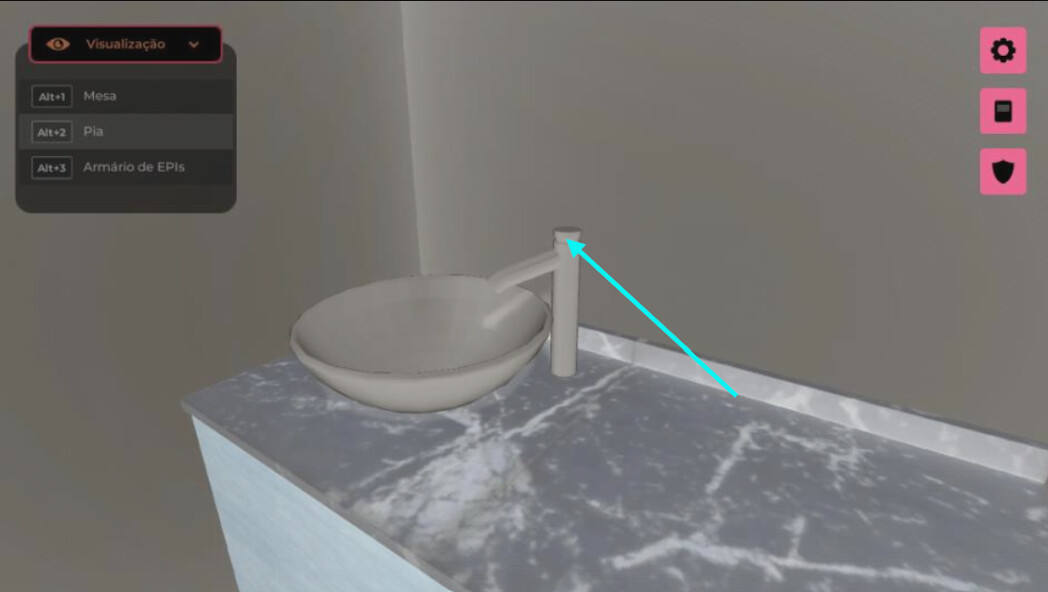We provide AGLV492 PECRPDM online (apkid: com.algetectecnologia.fasesdamarchahumana2) in order to run this application in our online Android emulator.
Description:

Run this app named AGLV492 PECRPDM using MyAndroid.
You can do it using our Android online emulator.
1.
OBJECTIVE
Human gait is a repetitive sequence of lower limb movements that occurs cyclically.
Spatial parameters are important for understanding the gait cycle.
The objective of this laboratory practice is to develop the previously acquired knowledge about the spatial parameters in relation to the foot during gait, as well as to guide it for the analysis in the physiotherapeutic practice.
At the end of this experiment, you should be able to:
describe the spatial parameters in relation to the foot during gait;
measure step length and stride length;
differentiating the measurement of step length and stride length;
apply each of these parameters in gait analysis.
2.
WHERE TO USE THESE CONCEPTS?
The analysis of spatial parameters in relation to the foot during gait can be applied in: physical exams of patients with gait disorders, traumato-orthopedic disorders, osteoneuromioarticular disorders; athlete assessment; pain in the hip region, lower limbs and adjacent regions, among others.
3.
THE EXPERIMENT
In this experiment, you will carry out anamnesis and, based on the model student walking in the indicated place, measurements of the spatial parameters will be carried out in relation to the foot during gait, such as step length and stride length.
4.
SECURITY
Respecting good laboratory practices, it is necessary to use a long-sleeved white coat and closed shoes that cover the back of the foot, both in good hygiene and conservation conditions.
5.
SCENARIO
This practice will be carried out in a private, quiet, well-lit and spacious room.
The environment must contain a table with chairs for the anamnesis, and a corridor is indicated for the gait analysis, so that the patient can walk.
OBJECTIVE
Human gait is a repetitive sequence of lower limb movements that occurs cyclically.
Spatial parameters are important for understanding the gait cycle.
The objective of this laboratory practice is to develop the previously acquired knowledge about the spatial parameters in relation to the foot during gait, as well as to guide it for the analysis in the physiotherapeutic practice.
At the end of this experiment, you should be able to:
describe the spatial parameters in relation to the foot during gait;
measure step length and stride length;
differentiating the measurement of step length and stride length;
apply each of these parameters in gait analysis.
2.
WHERE TO USE THESE CONCEPTS?
The analysis of spatial parameters in relation to the foot during gait can be applied in: physical exams of patients with gait disorders, traumato-orthopedic disorders, osteoneuromioarticular disorders; athlete assessment; pain in the hip region, lower limbs and adjacent regions, among others.
3.
THE EXPERIMENT
In this experiment, you will carry out anamnesis and, based on the model student walking in the indicated place, measurements of the spatial parameters will be carried out in relation to the foot during gait, such as step length and stride length.
4.
SECURITY
Respecting good laboratory practices, it is necessary to use a long-sleeved white coat and closed shoes that cover the back of the foot, both in good hygiene and conservation conditions.
5.
SCENARIO
This practice will be carried out in a private, quiet, well-lit and spacious room.
The environment must contain a table with chairs for the anamnesis, and a corridor is indicated for the gait analysis, so that the patient can walk.
MyAndroid is not a downloader online for AGLV492 PECRPDM. It only allows to test online AGLV492 PECRPDM with apkid com.algetectecnologia.fasesdamarchahumana2. MyAndroid provides the official Google Play Store to run AGLV492 PECRPDM online.
©2024. MyAndroid. All Rights Reserved.
By OffiDocs Group OU – Registry code: 1609791 -VAT number: EE102345621.